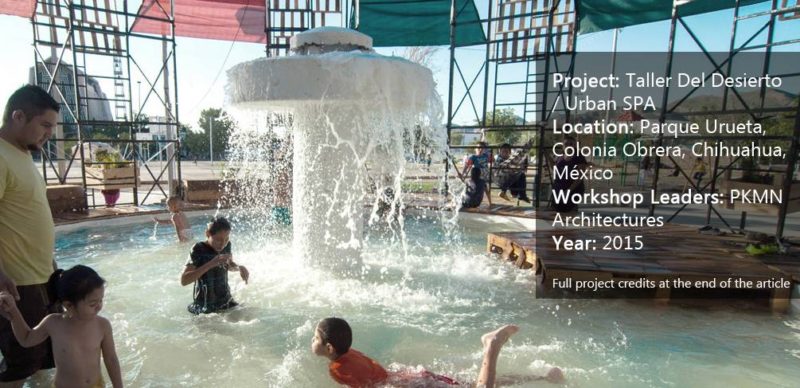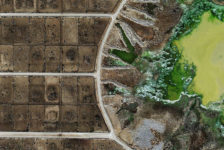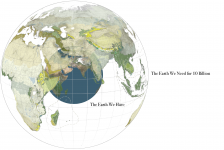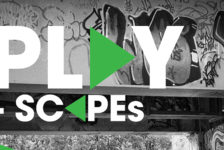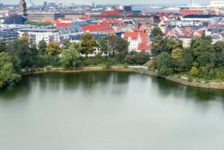Article by Samia Rahman Urban Spa, by students of ISAD, along with PKMN architects helps to bring life to the city, in Chihuahua, Mexico A community is the extended family of a society. And that extended family dreams of being surrounded by verdant, interactive spaces rather than a concrete jungle. Many times, landscape architects create new public places with green areas, seating, play spaces, and walking trails. But sometimes the revitalization of “dead spaces” with a simple installation can prove to be more beneficial by providing amenities in a previously boring life. These kinds of projects bring the community together to maintain the public realm. How do we bring an impossible dream to life? The students of the Instituto de Arquitectura y Diseno de Chihuahua in Mexico, along with the community and PKMN architects, did so by forming a temporary installation around a dead fountain. WATCH >>> TALLER DEL DESIERTO 2015 _ ISAD
Bring Life to the City
Bringing the Community Together In the north of Mexico, the city of Chihuahua has faced some problematic issues linked with drug trafficking, lack of urban facilities, derelict streets, and abandoned parks where mishaps are a daily phenomenon. Held each summer by the ISAD, the “Taller del Desierto” workshop anticipates breathing new life into these neglected public spaces. This year, the aim of the “Taller del Desierto” workshop was to involve citizens as much as possible in creating a community-inspired project to revitalize the center of Chihuahua. People living in a community know better than anyone about what they want in their urban space. That’s why it is good practice to allow them to participate in designing these spaces.
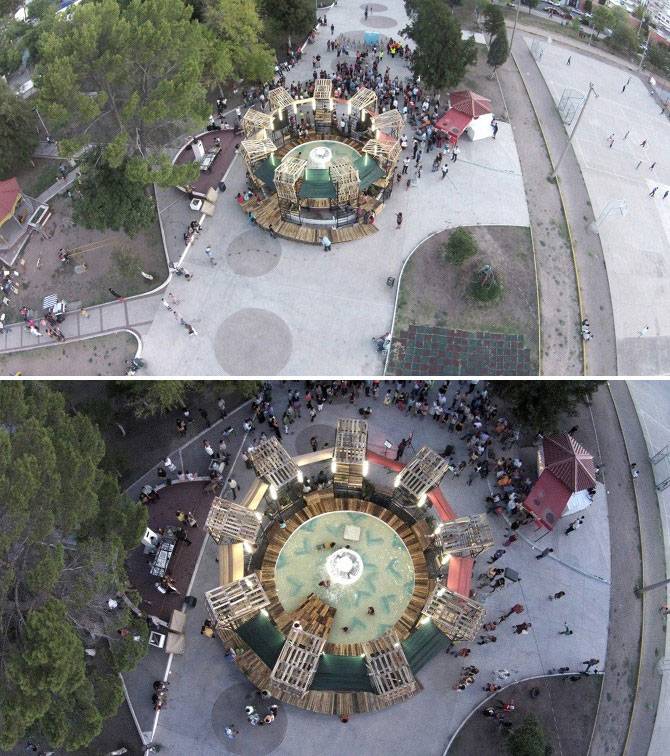
“Taller del Desierto” Urban Spa. Image courtesy of PKMN architects
Students from ISAD in Chihuahua, along with Madrid-based architects PKMN and local residents, designed the Urban SPA, a temporary interactive installation at Parque Urueta in the city center. The chosen space was built in 1930 and abandoned in recent decades because of excessive misuse that gradually turned the space dead.
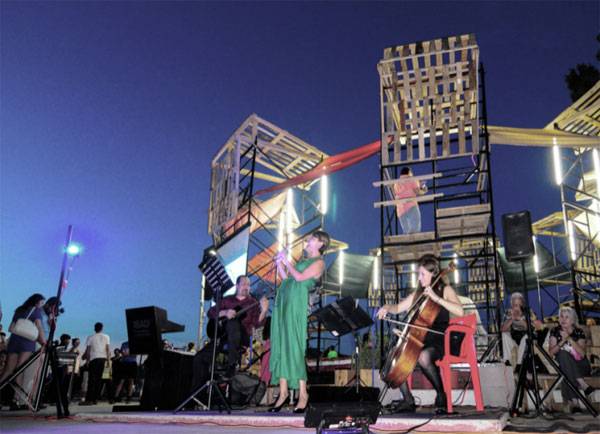
“Taller del Desierto” Urban Spa. Image courtesy of PKMN architects
At first, the students wanted to design the park as an imaginary future public space, trying to fulfill the residents’ expectations as a part of their workshop. Urueta Park, which has an improper pathway lacking in identity, is divided into two areas: a small woodland and a sports area without facilities. From their observations, the students also identified a dead public water fountain beside the park that, while no longer usable, was still cherished by the locals.

“Taller del Desierto” Urban Spa. Image courtesy of PKMN architects
The participatory workshop yielded many ideas, including adding benches and shaded structures for sitting, but the community strongly demanded reactivation of the fountain as the heart of the park for increasing activities. The students wanted to give a new identity to the old fountain and its neglected surroundings. They and the community members were focused on making a temporary installation around the fountain. They designed the revitalization proposal in a week, then assembled the Urban SPA using 40 scaffolding units, several dozen pallets, some remnants of shading mesh, and a few gallons of paint. After hearing the proposal, the city was interested in joining the initiative and agreed to install a water pump that has brought a new life to the fountain.
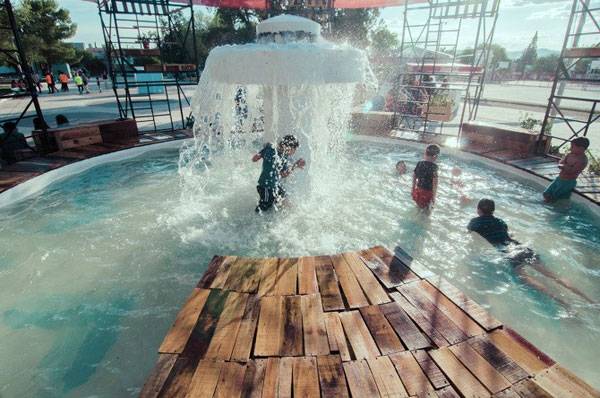
“Taller del Desierto” Urban Spa. Image courtesy of PKMN architects
The installation is difficult to overlook, as it is built from a series of wooden surfaces that transform the unused fountain into a flourishing public space. The multipurpose bathing decks invite people to sit, sunbathe and enjoy a small garden with a ramp that provides universal accessibility. The design offers a platform to all who want to play by the sprinkling water, surrounded by nine large scaffolding towers that provide shade. The towers hold some hammocks, small viewpoints, and a resting platform that make them dynamic. The project takes advantage of its location and boosts the existing activities.
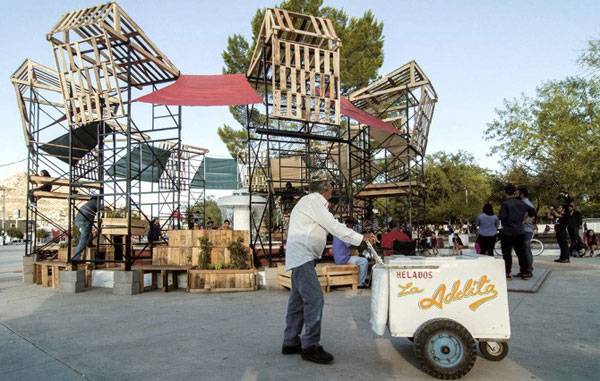
“Taller del Desierto” Urban Spa. Image courtesy of PKMN architects
The inspiration behind the work is an attraction or circus tent. Morning shadows from a neighboring giant tree flit back and forth between the park area and nearby tennis courts, as well as the enhanced activities taking place around it. The perimeter of the stands is oriented toward zumba and yoga classes in the afternoons, and bustles with shopping kiosks, corn stalls, and palettes. At night, the whole arena is used as a setting for performances and concerts.
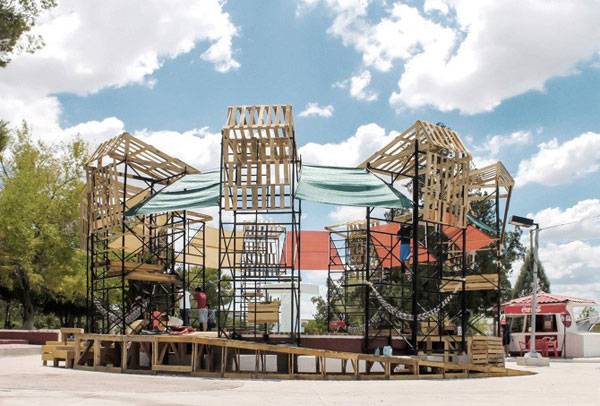
“Taller del Desierto” Urban Spa. Image courtesy of PKMN architects
The place is not desolate for a moment, because it welcomes versatile activities with various people walking, playing, and gossiping around the water source, which creates a vivid environment for sharing daily life experiences with lots of hope and expectations.
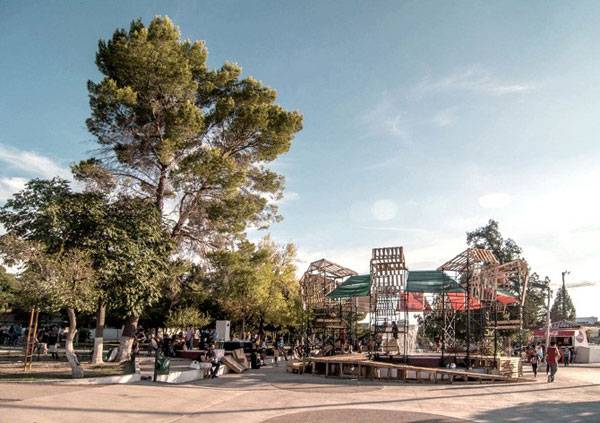
“Taller del Desierto” Urban Spa. Image courtesy of PKMN architects
Because of the success of this amazing transformation, the university is raising funds to establish the installation permanently. Describing the project, PKMN architects say Urban SPA “is born as a unique proposal but at the same time, it’s being reconsidered as a concern for the reactivation of unused water sources in the city of Chihuahua”. They also refer to the potential use of this model in other cities. The installation is an ideal example of interactive architecture that not only rejuvenates a space, but also successfully creates an attraction for all by uniting a neighborhood.
Could this type of simple idea bring all of our neighborhoods closer together? Go to comments 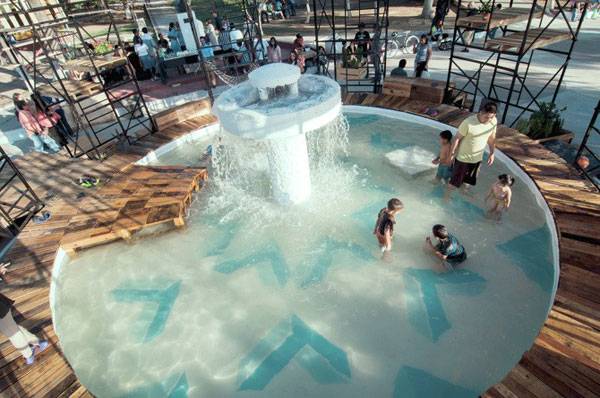
“Taller del Desierto” Urban Spa. Image courtesy of PKMN architects
Full Project Credits For the Urban Spa:
Project Name: Taller Del Desierto / Urban SPA Location: Parque Urueta, Colonia Obrera, Chihuahua, México. Developer: ISAD [Instituto de Arquitectura y Diseno de Chihuahua] / www.isad.edu.mx/ Workshop Leaders: PKMN Architectures Year: 2015 Recommended Reading:
Article by Samia Rahman
Published in Blog









